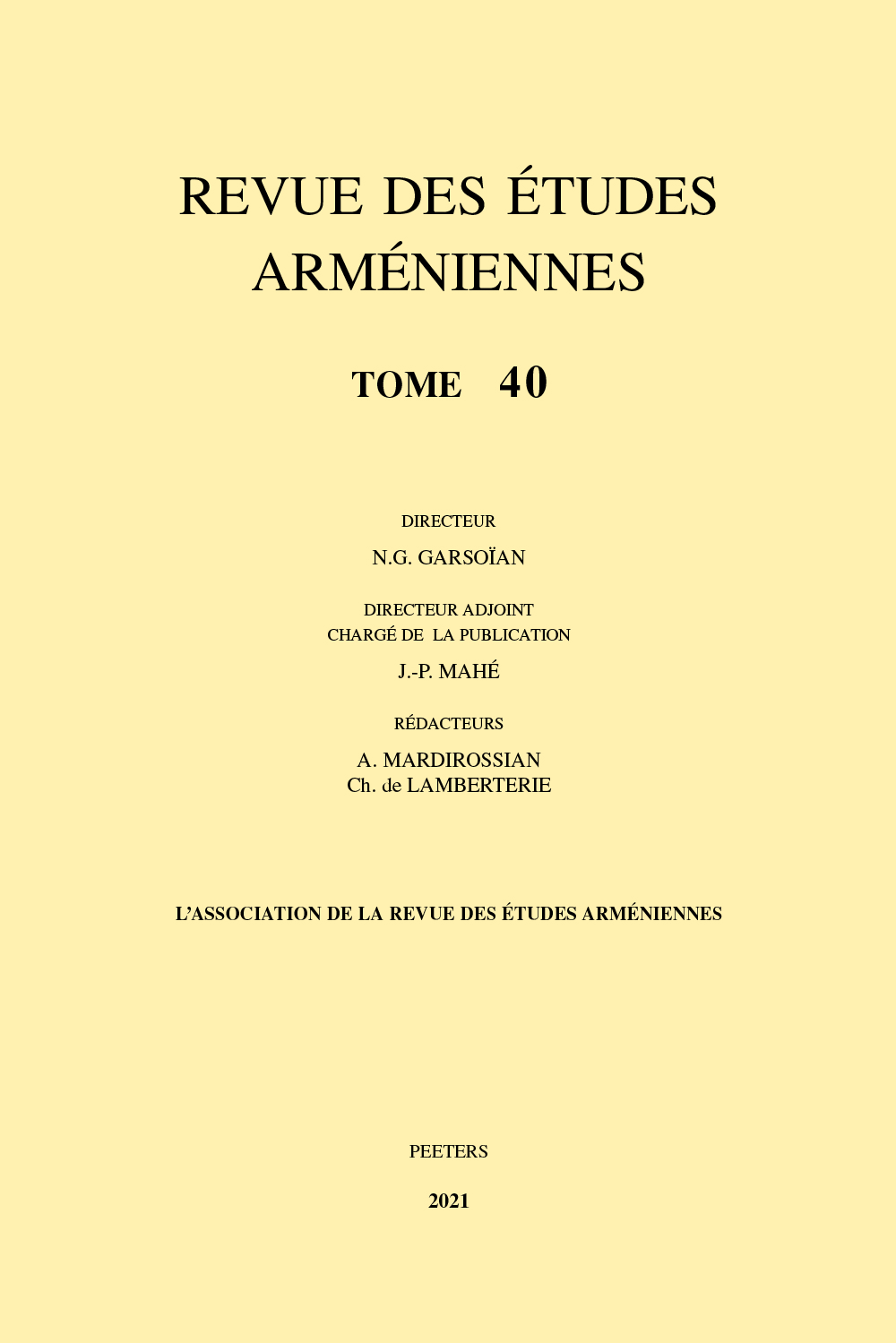 previous article in this issue previous article in this issue | next article in this issue  |

|
Document Details : Title: The Role of Priscan's Institutiones Grammaticae in Informing Yovhannēs K'ṙnec'i's Innovative Account of Armenian Grammar with Regard to Terminology, Classification, and Organization with Special Focus on his Investigation of Syntax Author(s): COWE, S. Peter Journal: Revue des Études Arméniennes Volume: 39 Date: 2020 Pages: 91-121 DOI: 10.2143/REA.39.0.3288967 Abstract : K‘ṙnec‘i’s treatise of the mid-14th century is the product of a period of immense intellectual interchange between the Mediterranean world and the Near East. Far from being a practical primer like Thrax’s to facilitate students’ understanding of classical literature, his work is envisaged as a comprehensive introduction to the seven liberal arts and higher learning. This innovation was grafted onto the legacy of medieval Armenian commentaries on grammar K‘ṙnec‘i would have been familiar with at the monastic academy of Glajor, as a result of which his compilation emerges as an eclectic hybrid, mediated by K‘ṙnec‘i’s Dominican teacher Bartolomeo da Poggio and his training in the Latin grammatical tradition from Priscian to his 12th century commentator Petrus Helias. However, K‘ṙnec‘i is most innovative in syntax. Thus Priscian’s account of oratio (ban, asut‘iwn) and his distinction between incomplete and complete speech become the core of K‘ṙnec‘i’s second and third chapters, where he reviews the rules for agreement and case government first in phrases and then full sentences. There he follows the Latin tradition in predicating the case on the meaning of the verb, dividing the latter into a series of subsets of parallel semantic range. Meanwhile, in the section on formal syntax he explores five particular structures, employing Apollonius Dyscolus’ terminology via Priscian, before discussing various types of relative clause, while in treating impersonal verbal forms he appeals to Petrus Helias’ categories of the gerund and supine. |
|
